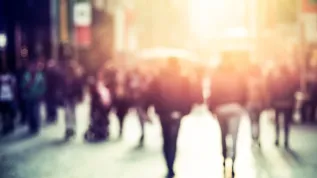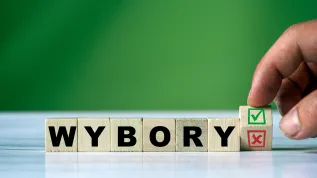
Lip print is like a fingerprint: left on the edge of a glass or a cigarette butt it may expose the perpetrator. This is possible due to the grooves that cover the lips and form a unique system of lines, which does not change throughout our lives.
"Each of us is born with a defined lip print. On our lips we have cavities - grooves which form a system of interconnected lines. If we press lips against the glass, juice carton, and even cigarette filter, we leave a unique print" - told PAP said Łukasz Smacki, PhD student at the University of Silesia.
This image does not change throughout life, it may only suffer small deformations. Our face changes with age, but the grooves remain the same. "They may just be less visible, the distance between them can change. But the lines we had as children, remain with us into old age" - said the scientist from the University of Silesia.
Research conducted by scientists already in the 1970s have shown that a person can be identified based on the lip print. The number of characteristic features depend on genes. It ranges from about 900 to 1200, and the larger the mouth, the more of these features. Only nine identical features on the trail from the crime scene and the comparison print gives 100 percent certainty that both prints belong to the same person.
Lip prints belong to the so-called niche traces. Apart from them, traces analysed at crime scenes include prints of the ear, face, skin, gloves. Niche traces are used much less frequently than, for example, fingerprints. In Poland, lip prints are used in only about 10 cases a year.
The identification procedure for such prints is long and laborious. "Lip print is secured at the crime scene, then several suspects are selected in an investigation. 5 to 10 comparison prints are collected. Results are sent by mail to the Department of Fingerprint Processing of the Central Police Forensic Laboratory in Warsaw. Cheiloscopy expert’s task is to match the print from the crime scene to the comparison prints" - explained the scientist.
A separate database of suspects is created for each case. Because of the rarity of this type of evidence, there is no chance to create a national or global database, similar to the method for collecting fingerprints. However, a European system for niche trace analysis (including lip prints) can be created. As part of his doctoral thesis, Łukasz Smacki develops a method that will be the basis for the creation of the system of crime scene evidence analysis.
"I focus on lip print analysis, because these traces are the most difficult to analyse. Lips are flexible and each time they leave a slightly different print. Some lines are stretched, some are not visible, they may be blurry, often several prints cover one spot. I believe that if I can create a system for the analysis of such prints, adjusting it to analyse ear prints will be only a formality" - described Smacki.
In order to develop a method, the scientist had to collect test material - database of lip prints, which he could use to test his program. He could not obtain data from the police because of the secret of investigations. Smacki asked his family, friends and students for help and managed to collect 200 lip prints from 50 people and create his own database.
"It was hard work, because collecting lip prints properly requires some practice. In the beginning, often even 30 prints had to be collected from one person to have 10 usable prints" - described the scientist.
Computer program he develops is based on the image matching algorithm. Police experts will still have to collect lip prints from suspects, but the computers will help in the comparison. In the future, the program used in forensic laboratories could allow the identification of the other niche traces.
Smacki explained that some countries do not have adequate procedures and do not collect lip prints from crime scenes. "In Europe, Poland is the leader in this field. We sometimes get prints for the analysis from Norway and from Germany "- said Smacki.
PAP - Science and Scholarship in Poland, Ewelina Krajczyńska
ekr/ ula/ agt/ mrt/
tr. RL













